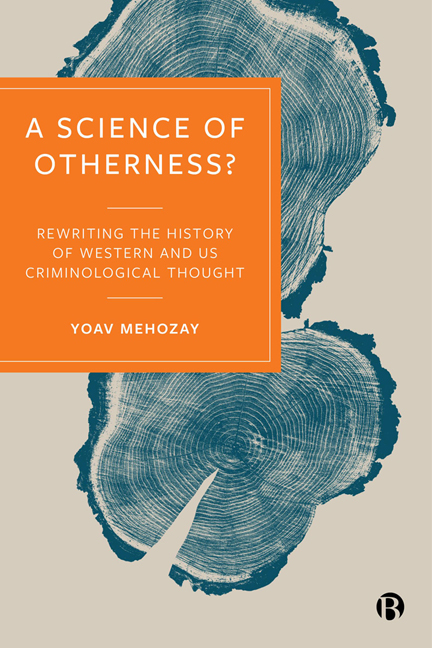Book contents
- Frontmatter
- Dedication
- Contents
- Acknowledgements
- 1 Introduction: Criminology as Otherness?
- 2 The Classical School: Otherness as an Ideology of an Imaginary Bourgeois Society
- 3 The Early Days of Positivist Criminology: An Ideology of Universalism and Otherness
- 4 Two Versions of Otherness: Between Eugenics and Modernization Theory
- 5 Otherness as Subculture
- 6 Managing the Other: Otherness in Practice
- 7 Conclusion: A Science of Otherness?
- Notes
- References
- Index
4 - Two Versions of Otherness: Between Eugenics and Modernization Theory
Published online by Cambridge University Press: 27 March 2024
- Frontmatter
- Dedication
- Contents
- Acknowledgements
- 1 Introduction: Criminology as Otherness?
- 2 The Classical School: Otherness as an Ideology of an Imaginary Bourgeois Society
- 3 The Early Days of Positivist Criminology: An Ideology of Universalism and Otherness
- 4 Two Versions of Otherness: Between Eugenics and Modernization Theory
- 5 Otherness as Subculture
- 6 Managing the Other: Otherness in Practice
- 7 Conclusion: A Science of Otherness?
- Notes
- References
- Index
Summary
The previous chapter ended with a quotation by Charles Loring Brace from 1880, in which he affirmed that the best way to govern the ‘dangerous classes’ was ‘not to punish them, but to prevent their growth’ (1880: i–ii). This was the logical conclusion based on deterministic arguments that prevailed in the early stages of positivist criminology, as informed by conceptions of degeneration and atavism. ‘Preventing the growth’ of dangerous others clearly alludes to eugenic policies, which, as we shall see, were extremely pervasive in the period covered in this chapter. But if we continue to read Brace’s argument, we find that he also points to an additional strategy – that of socializing, reforming, educating, and generally bettering the underdeveloped portion of the citizenry through moralistic campaigns:
To so throw the influence of education and discipline and religion about the abandoned and destitute youth of our large towns; to so change their material circumstances, and draw them under the influence of the moral and fortunate classes, that they shall grow up as useful producers and members of society, able and inclined to aid it and its progress.
(Brace, 1880: ii)Such policies, to be sure, were also common and indicative of the era. I refer to this disciplinary and reformative logic as modernization theory.
It is between these two logics, eugenics and modernization, that this chapter travels. In terms of wider history, we are now in what is known as the Progressive Era – the period from roughly 1890 to 1930, which was considered an era of reform, particularly in the United States. In criminological texts, this period is often divided into two, represented by their leading schools of thought: first the neo-Lombrosian era, defined by multifactor explanations of crime, and then the Chicago School, which argued for social causes of delinquency, starting with social ecology theory. As we shall see, there are major differences between the neo-Lombrosian and Chicago School paradigms. Yet these two schools of thought share the fundamental premises of positivist criminology: the ‘otherness’ of the offender, based on some form of pathology, and therefore the need for specialized knowledge to control and manage this population.
- Type
- Chapter
- Information
- A Science of Otherness?Rereading the History of Western and US Criminological Thought, pp. 63 - 80Publisher: Bristol University PressPrint publication year: 2023



